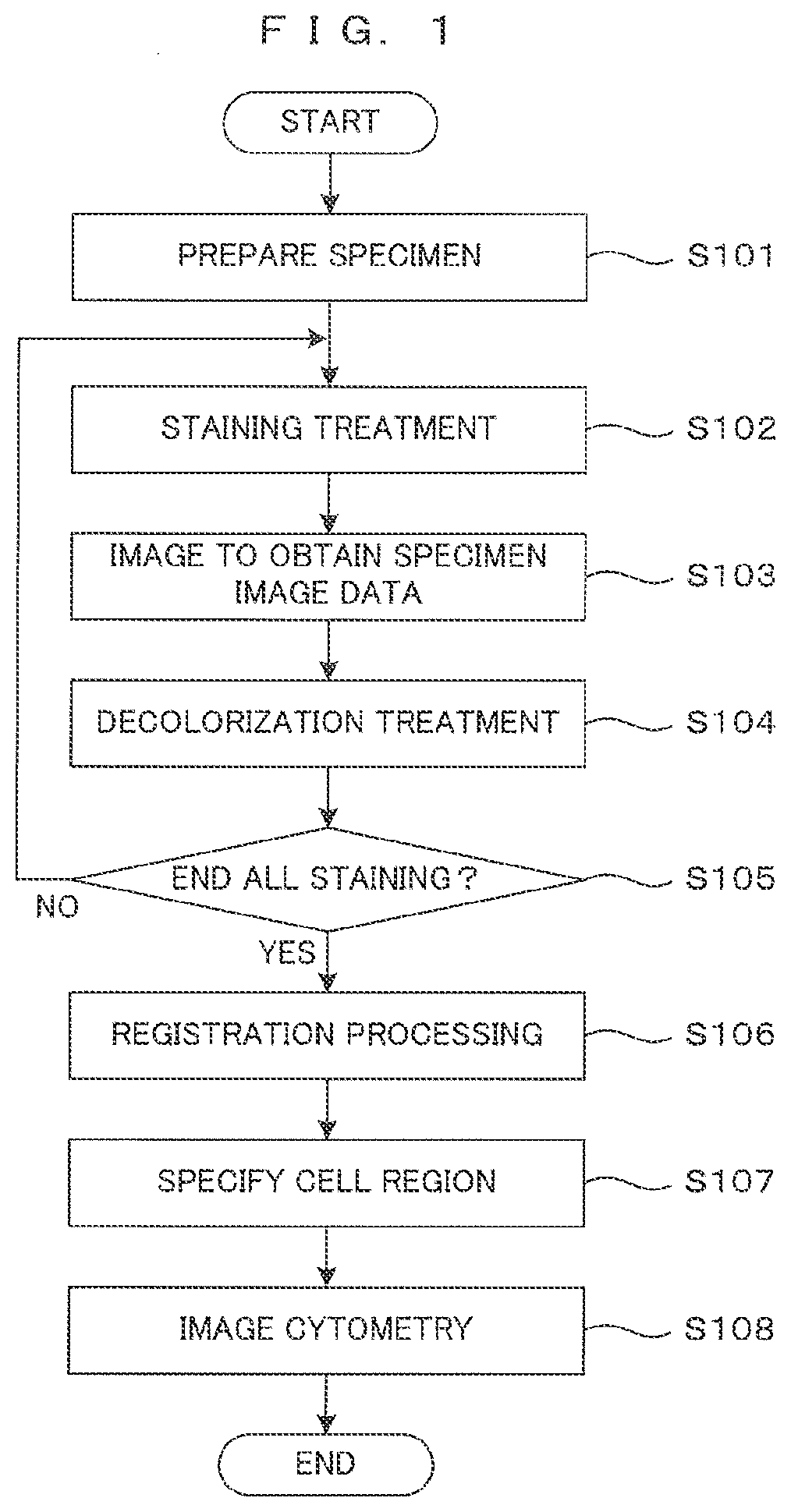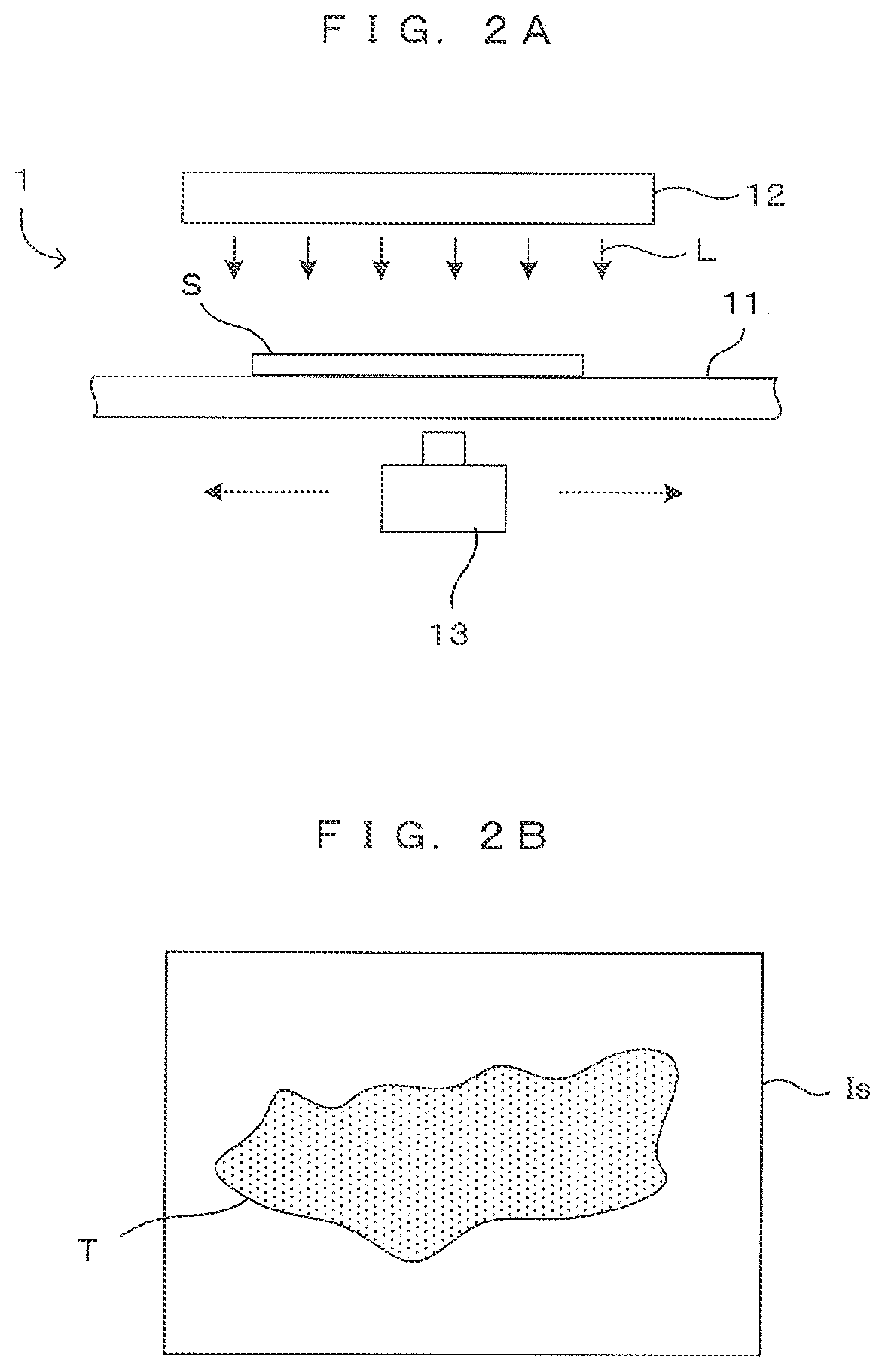Specimen analysis method and image processing method
a technology of image processing and specimen analysis, applied in image enhancement, image data processing, instruments, etc., can solve the problems of difficult to clearly separate individual cells in specimens in which cells exist at a high density, loss of cell position information in specimens, and inability to apply a technique immediately to multiple immunostained specimens
- Summary
- Abstract
- Description
- Claims
- Application Information
AI Technical Summary
Benefits of technology
Problems solved by technology
Method used
Image
Examples
Embodiment Construction
[0024]Hereinafter, a specimen analysis process (hereinafter, merely referred to as an “analysis process”), which is one embodiment of a specimen analysis method according to the invention, is described. This analysis process is a process for specifying the positions of individual cells from an image of a specimen including a multitude of cells such as a pathological tissue specimen and obtaining quantitative information such as expression states and expression levels of biological materials in each cell. A basic technical concept of this process follows a multiple immunostaining technique and is not described since a basic principle of multiple immunostaining is known. First, this analysis process is summarized with reference to FIG. 1 and, then, the content of each processing step is described in detail.
[0025]FIG. 1 is a flow chart showing a flow of the specimen analysis process of this embodiment. First, a pathological tissue specimen to be analyzed is prepared (Step S101). For ex...
PUM
 Login to View More
Login to View More Abstract
Description
Claims
Application Information
 Login to View More
Login to View More - R&D
- Intellectual Property
- Life Sciences
- Materials
- Tech Scout
- Unparalleled Data Quality
- Higher Quality Content
- 60% Fewer Hallucinations
Browse by: Latest US Patents, China's latest patents, Technical Efficacy Thesaurus, Application Domain, Technology Topic, Popular Technical Reports.
© 2025 PatSnap. All rights reserved.Legal|Privacy policy|Modern Slavery Act Transparency Statement|Sitemap|About US| Contact US: help@patsnap.com



